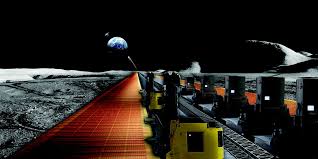
Breaking News
 $26M Frozen on Blockchain - With One Click
$26M Frozen on Blockchain - With One Click
 Italy are on national strike shutdown rejecting digital enslavement...
Italy are on national strike shutdown rejecting digital enslavement...
 The following U.S. states are currently using the rebranded "Reporty Homeland Security" so
The following U.S. states are currently using the rebranded "Reporty Homeland Security" so
 NATO Chief Urges Europe To Prepare For Long-Term World War With Russia, China, Iran & North Korea
NATO Chief Urges Europe To Prepare For Long-Term World War With Russia, China, Iran & North Korea
Top Tech News
 HUGE 32kWh LiFePO4 DIY Battery w/ 628Ah Cells! 90 Minute Build
HUGE 32kWh LiFePO4 DIY Battery w/ 628Ah Cells! 90 Minute Build
 What Has Bitcoin Become 17 Years After Satoshi Nakamoto Published The Whitepaper?
What Has Bitcoin Become 17 Years After Satoshi Nakamoto Published The Whitepaper?
 Japan just injected artificial blood into a human. No blood type needed. No refrigeration.
Japan just injected artificial blood into a human. No blood type needed. No refrigeration.
 The 6 Best LLM Tools To Run Models Locally
The 6 Best LLM Tools To Run Models Locally
 Testing My First Sodium-Ion Solar Battery
Testing My First Sodium-Ion Solar Battery
 A man once paralyzed from the waist down now stands on his own, not with machines or wires,...
A man once paralyzed from the waist down now stands on his own, not with machines or wires,...
 Review: Thumb-sized thermal camera turns your phone into a smart tool
Review: Thumb-sized thermal camera turns your phone into a smart tool
 Army To Bring Nuclear Microreactors To Its Bases By 2028
Army To Bring Nuclear Microreactors To Its Bases By 2028
 Nissan Says It's On Track For Solid-State Batteries That Double EV Range By 2028
Nissan Says It's On Track For Solid-State Batteries That Double EV Range By 2028
A Robot Army To Build Solar Panels (On The Moon)

As the global headcount nears 8 billion, our thirst for kilowatts is growing by the minute. How will we keep the lights on without overheating the planet in fossil fuel exhaust? Alternative energy is the obvious choice, but scaling up is hard. It would take an area the size of Nevada covered in solar panels to get enough energy to power the planet, says Justin Lewis-Weber, "and to me, that's just not feasible." This past March, Lewis-Weber, a then-high school senior in California, came up with a radical plan: self-replicating solar panels—on the moon.
Here's the gist: When solar panels are orbiting Earth, they enjoy 24 hours of unfiltered sunshine every day, upping their productivity. Once out there, they could convert that solar radiation into electricity (just as existing solar panels do) and then into microwave beams (using the same principle as your kitchen appliance). Those microwaves then get beamed back to Earth, where receivers convert them back into electricity to power the grid. Simple! Except that Lewis-Weber estimates that building and launching thousands of pounds of solar panels and other equipment into space will be outrageously expensive, in the range of hundreds of trillions of dollars.
Instead, he suggested, why not make them on the moon? Land a single robot on the lunar surface, and then program it to mine raw materials, construct solar panels, and (here's the fun part) make a copy of itself. The process would repeat until an army of self-replicating lunar robot slaves has churned out thousands of solar panels for its power- hungry masters.

 Carbon based computers that run on iron
Carbon based computers that run on iron

